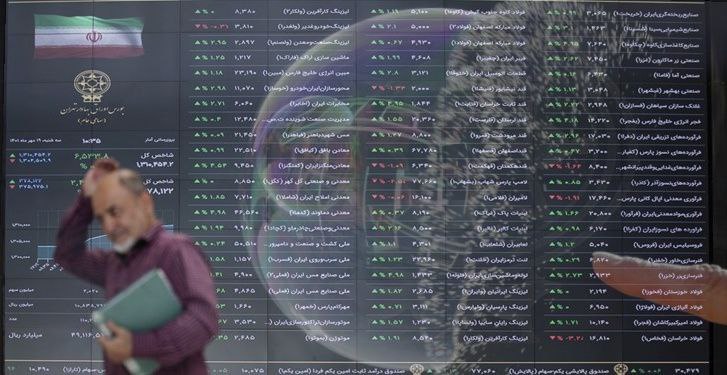Events of 2020 Repeat
Events of 2020 Repeat According to Iran Gate, the more than 14% drop in the Tehran Stock Exchange last week has created an atmosphere in the stock market indicating that shareholders are panicking. Many observers also warn that the events of 2020 may repeat in the capital market. These individuals believe that the Tehran Stock Exchange is in a bubble and market participants should avoid continuing to invest in this market. But is such a claim true, or is the Tehran Stock Exchange devoid of a price bubble?
The decline in the stock market over the past ten days has once again caused a panic atmosphere in the stock exchange. As they say, shareholders are scared of even the slightest price fluctuation, reminding them of the events that occurred in 2020. Now, on social networks and in stock market circles, the debate has arisen whether the bubble that engulfed the stock exchange in 2020 and its bursting led to a market explosion is growing again today.
A Look at the Downward Trend of the Market
To examine the events that have occurred, the downward trend of the index since May 7 should be evaluated. To answer the ambiguity of whether there is a bubble in the stock exchange or not, it should be known in which symbols the downward trend is more severe.
An examination of the events of the past ten days in the Tehran Stock Exchange shows that only 15 shares took an upward trend during the red days of the market. Most of these shares are among those known as the smaller groups of the market. Among the most important of these shares, which had a return of more than 80%, was the symbol ‘Farood’, belonging to Shahrood Steel Company.
However, looking at the red symbols of the market in the last 5 working days shows that out of 499 market investment shares, 484 shares, 97% of the stock exchange and over-the-counter shares, have experienced a severe or slight price drop. Among these shares, ‘Kamarjan’, ‘Bekam’, ‘Bepayvand’, ‘Fesooj’, and ‘Cast Iron’ have experienced the most decline.
However, by focusing on smaller and index-making shares, it can be understood that the intensity of the price drop in smaller shares has been much greater than the market average. To better understand this issue, one can point to the much greater price drop of 369 smaller shares in the red week of the Tehran Stock Exchange. Looking at the list of symbols in this group, it can be clearly seen that almost the absolute majority of these shares belong to the smaller groups of the market.
This proposition should be analyzed alongside the growth rate of share groups in April and May 2022. The rate of return of the equal-weight index in the new year until before May 7 was about 30%. The equal-weight index also experienced about 25% growth. The 5% gap between the growth of the equal-weight index and the overall index indicates that the growth rate of smaller shares was much greater than that of the small and medium shares of the stock exchange.
Does the Stock Exchange Have a Bubble?
Most stock market experts believe that the variables influencing the market trend do not at all give this warning to shareholders that the Tehran Stock Exchange has a price bubble. However, this proposition is relative and cannot be generalized to the entirety of the market shares. To understand whether shareholders can trade with peace of mind and not panic, attention should be paid to the data mentioned earlier.
As mentioned, smaller shares have experienced faster growth compared to index-making shares over a month and a half leading to May 7, 2023. Meanwhile, a significant number of these shares have had heavy and crowded buy queues in the days leading up to the heavy market decline.
For example, 6 symbols known as paper shares from the petrochemical group of the stock exchange are among these shares. In other words, part of the faster growth of the equal-weight index and consequently the overall index can be attributed to these buy queues, which lack backing.
In fact, examining the overall market situation gives the message to the audience that smaller shares were accompanied by a relative price bubble until before May 7. However, given that the decline rate of this group compared to the index-makers has been much more severe, it can be said that this bubble has been significantly eliminated.
In simpler terms, it can be said that the price of smaller shares carried a heavy bubble until before May 7. But after the more than 200,000-point drop in the overall index and 15% in the equal-weight index, this bubble has almost burst. Therefore, it can be claimed that the Tehran Stock Exchange currently faces almost no price bubble, although some shares are still in this state. However, it seems that the majority of stock exchange symbols still lag behind the 50% inflation that has recorded increasing growth.
In other words, not only does the overall stock market not have a price bubble, but it can be claimed that the Tehran Stock Exchange is facing a negative price bubble. Contrary to some claims, the price of shares is currently much lower than its real value and still has room for growth. Although some shares still have a positive bubble and are experiencing a price bubble, overall, it seems that the capital market has much greater growth potential and probably no recognized risk is seen for the participants in this field.
Minister of Economy: The Stock Exchange Has No Bubble
English
View this article in English

